
9 minute read
Tidewater Gardening: K. Marc Teff eau
TIDEWATER GARDENING
by K. Marc Teffeau, Ph.D.
Bulbs, Perennials, Vegetables and Houseplants
Now is the time to dig out the list of spring-flowering bulbs you made last spring and start getting those bulbs into the ground so you can be among the blissful rather than wishful as the next winter snows begin to melt. If you didn’t get a list started last spring, a few bulbs to consider for starters are snowflake, glory-of-the-snow, snowdrops and winter aconite.
As you plant your spring bulbs,

Winter aconite
remember that a mass planting of one flower type or color will produce a better effect than a mixture of many colors. The flowers of bulbs stand out more vividly if displayed against a contrasting background: for example, white hyacinths among English ivy, yellow daffodils against a Burford holly hedge or red tulips towering over a carpet of yellow pansies.
Soil fertility is very important for a good bulb display. Bulbs are heavy feeders of nitrogen, so use a complete analysis fertilizer like 10-10-10 incorporated into the soil at planting time. Improve the soil structure and drainage of a heavy silt clay soil by incorporating generous amounts of well-rotted compost or manure at planting time.
Lots of spring bulb enthusiasts swear by bonemeal for fertilizing their planting beds. Unfortunately, the phosphorous in bonemeal is almost completely unavailable to plants until the soil temperature reaches about 50°. Bonemeal will
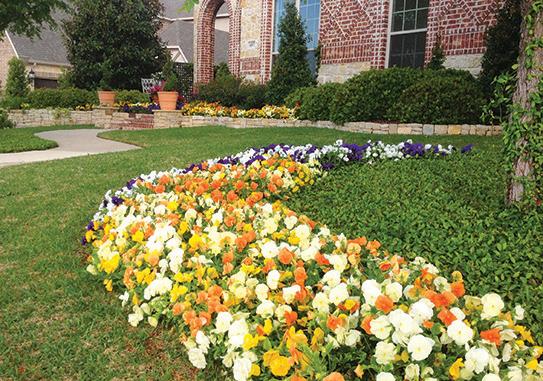

Rt. 50 at Rt. 565, 2 mi. South of Easton
410-822-8866 www.riodelmarent.com

SALES - PARTS - SERVICE
RIO DEL MAR ENTERPRISES

LOOK FOR US IN OUR NEW LOCATION!
The former Salisbury Pewter building, Rt. 50 - 2 miles south of Easton
aid your bulbs late in the growing season, but not at flowering time. If you want to use bonemeal for phosphorous and blood meal as a slow-release nitrogen source, either supplement it with 10-10-10 or plan to do some liquid feeding of the bulbs early in the spring as they appear.

Plant the bulbs with a bulb planter or trowel, but be careful not to mash the bulb into the soil. This will damage the basal plate (bottom of the bulb) and will cause it to rot.
Freesia corms can be planted early this month for December flowering. Plant them two inches deep in pots, then place out of doors in a shady place. Move the pots indoors to a cool location when night temperatures begin to dip below 45°. They will bloom in 10 to 12 weeks after planting to give you some early winter color indoors.
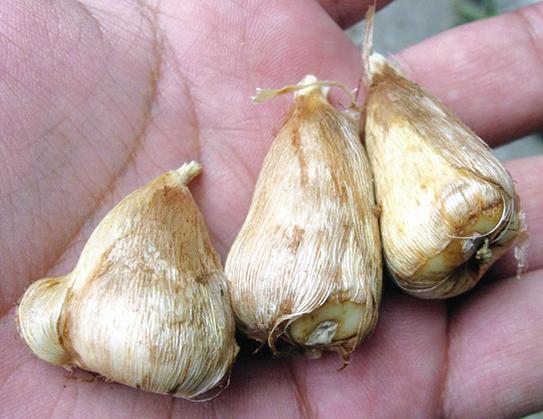
While in September we are planting some bulbs, other plants in the ground need our attention also. As the leaves of gladiolus yellow, it is time to dig the corms. Carefully dig up the corms with a spading fork to avoid damaging them. Cut the long leaves back to about one-half inch above the corm immediately after digging. Then dry to corms for 10 to 20 days, separate the large corms from the small one and store them in damp peat moss at 40-45° where there is good air circulation. To make sure that the mice don’t get into them, cover them with some rat wire and scatter some mouse bait about.
A foliage plant that has become very popular in the last few years in outdoor plantings is the caladium. If you haven’t used these be-
fore in the landscape, make a note and plant a few bulbs next year. They are best displayed as a mass planting against an evergreen shrub background.
If you have caladiums in the landscape, the cool nights in midSeptember will cause them to begin to lose leaves. Dig them up, allow to dry and then store in a warm, dry place. This space in the landscape can be replanted with Christmas peppers or Jerusalem cherry plants that have been grown from seed in pots sunk in the vegetable garden, or with mum transplants that have been grown to flower size in the vegetable garden.
Mums can be transplanted while in bloom, which makes them useful for instant landscapes in early autumn. Dig the plants carefully several hours or the next day after through watering, retaining as much of the root system as possible. Gently loosen a small amount of soil from the outer roots. Plant


Caladiums
and water thoroughly after placing to settle them in. As with any transplanting, it is best to do this early in the morning or late in the evening when temperatures are cool. Monitor plants carefully for several days for wilting, and shade briefly during the hotter periods of the day, if necessary.
September is a good month to work on the perennial flowerbeds in the landscape. Dig, divide and replant overcrowded beds of cannas, daylilies, violets, iris and Shasta daisies. Perennial phlox can also be moved now.
Every third or fourth year, divide big clumps of perennial phlox into thirds. In the perennial bed, spread a liberal amount of organic matter and bulb fertilizer evenly over the area. Mix this into the soil at least six to eight inches deep.
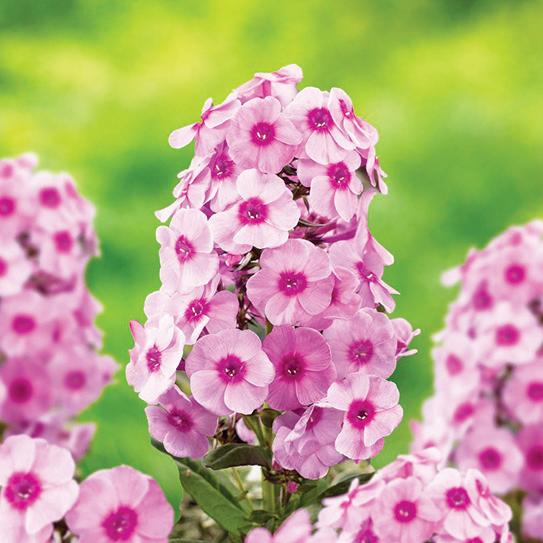
C. ALBERT MATTHEWS
INC.
Where Integrity Meets Innovation CARRIER 360° ENERGY AUDIT WATER PURIFICATION SYSTEMS PLUMBING-HEATING-AIR CONDITIONING GEOTHERMAL-SOLAR-NEW INSTALLATION ELECTRICAL-REPAIR & MAINTENANCE EFFICIENCY-SAFETY-COMFORT
WWW.CALBERTMATTHEWSINC.COM 410-822-0900
Space the divided perennials at least one foot apart in all directions so that root competition will not be a problem for several years.
If you have a sunny area to naturalize with small flowering annuals, sow seeds of sweet alyssum or Johnny-jump-ups. They will come up and become established. Both are very hardy and self-seed readily to maintain a natural area. Sowing seeds of hardy annuals such as sweet alyssum, pinks and sweet peas now will give the seedlings time to get established and develop good root systems before the coldest part of the winter. Doing this seeding gives them a head start on growth and flowering next spring.
In the vegetable garden, plant
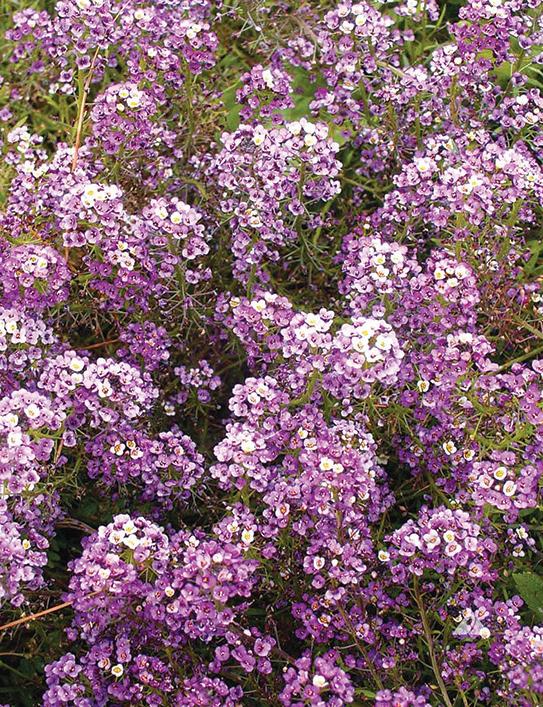
FRANK E.DAFFIN, INC.
Quality Builders Since 1936
410-822-2364 MHIC #1857 MHBR #877
frankedaffininc.com · fedaffin@atlanticbb.net

spinach, lettuce, kale, turnips and radishes in early September as the last crops for your fall garden. Soak seed furrows well before sowing seed and mulch lightly. Water the rows daily to promote germination and growth of young seedlings.
Production from the existing vegetable plantings is slowing down, and we notice a more uneven ripening process in the tomatoes and squash. Start to think about how you will preserve any of the semi-green or green tomatoes that you might have before the first frost hits next month. Near the end of September, pick off all tomato blossoms that won’t have time to bear fruit so that plant nutrients go into existing tomatoes.
Your hot peppers that are maturing will keep best if stored after they are dry. Pull up the entire plant and hang it up, or pick the peppers and thread on a string. Store in a cool, dry place. Wash your hands after handling them.
Green tomatoes may be stored for four to six weeks and will
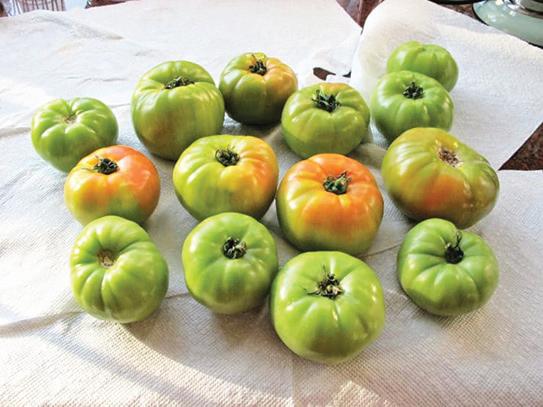
gradually ripen to a nice red color. The best storage conditions are about 60° with a moderately moist atmosphere. Harvest the tomatoes in a firm, ripe condition before frost. Remove the stems to prevent puncturing other fruits. Wash dirt off rather than wiping it off, which may cause skin scratches that leave the fruit susceptible to decay. If the storage location is quite dry, the tomatoes may be placed in film bags, or film-lined boxes to increase the humidity. Sort the fruit every week to remove those which ripen or start to decay.
Fall crops such as butternut and acorn squash, pumpkins and gourds can be harvested soon. To cure them for winter storage, you should leave them on the vine until the vine dies. Also, leave a small piece of stem attached to the fruit when harvesting. A stem cut off too close to the fruit will cause it to rot during storage.
Be sure to clean up the vegetable garden as you pull out spent plants. Removing the dead and dying plants will help to reduce the overwintering stages of many plant diseases and insect pests. After cleaning the garden, it is recommended that you add the soil-test-recommended amount of lime and organic matter. The final step is to protect the soil with a cover crop.
Cover crops, when sown in fall and plowed under in spring, are


QUALITY STROKES PAINTING
Interior & Exterior · Commercial & Residential
Michael Marshall 508 August Street Easton, MD Free Estimates
M.H.I.C. #35075 Phone: 410-714-8345 Fax: 410-822-4795 qstroke@yahoo.com
valuable because they improve soil tilth and fertility as well as prevent erosion during winter. The most valuable cover crops are legumes, such as vetch and clover. These plants have nitrogen-fixing bacteria associated with their roots that take nitrogen from the air and convert it into a form usable by the plants.
If you had set some of your houseplants out for the summer, now is the time to clean them up and prepare to bring them back indoors before night temperatures fall below 55° for the winter. Remove dead leaves and stems, as well as any soil on the outside of the pot. Check for insects prior to bringing plants back in, and remove any diseased leaves.
Don’t forget to wash windows this fall so that houseplants placed nearby can have maximum sunlight over winter.
Take a look at your herb garden and do some digging. Some herbs, such as parsley or sage, can be dug up, potted and used as houseplants over the winter. Happy Gardening!
Marc Teffeau retired as Director of Research and Regulatory Affairs at the American Nursery and Landscape Association in Washington, D.C. He now lives in Georgia with his wife, Linda.
Pamela P. Gardner, AIA, LLC

311 N. Aurora St., Easton · 410-820-7973 · pam@ppgaia.com www.pamelagardneraia.com











